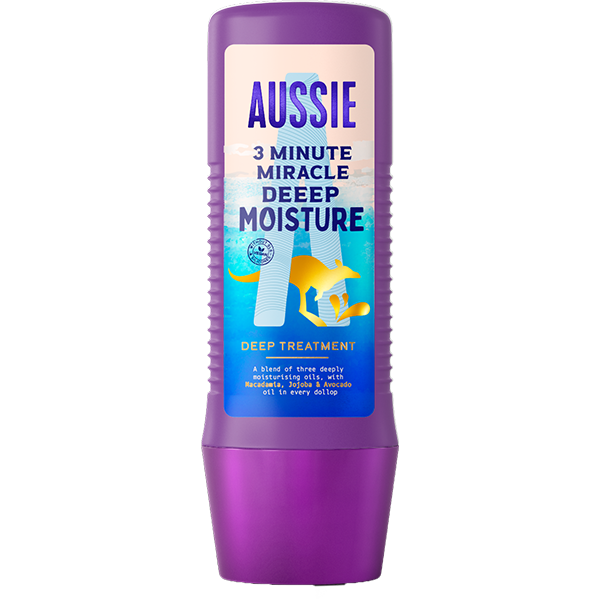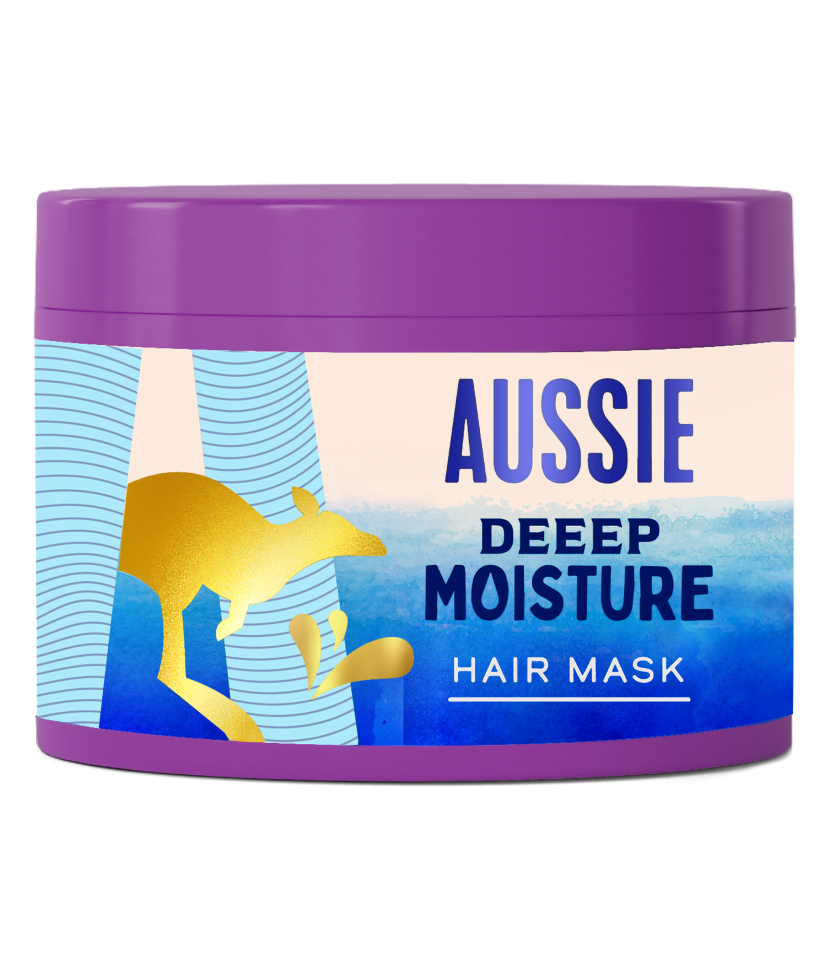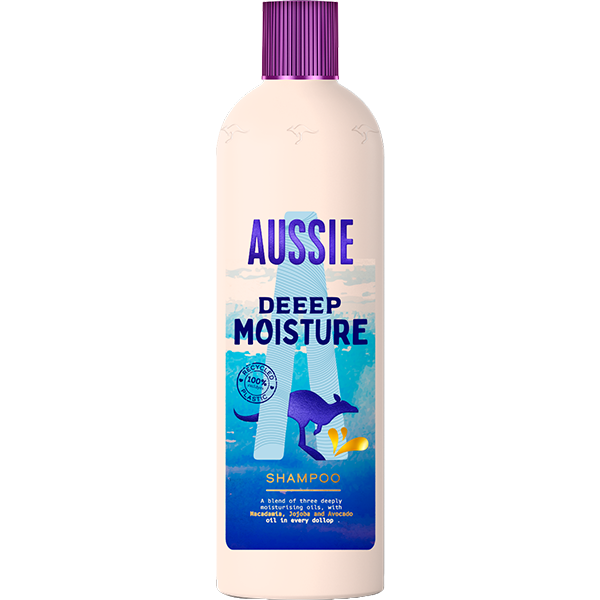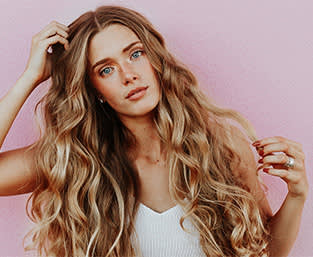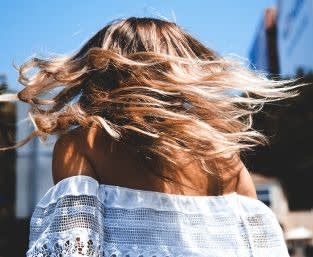
How to hydrate your hair? A complete guide for all hair types
Keeping hair moisturized is easy and we’ve got you covered when it comes to hair hydration. No worries! Whether you've got thick coarse hair, curly manes, or fine hair, we've got all the tips for how often you should moisturize your hair type.
How to hydrate curly hair?
If you’re lucky enough to have naturally curly hair, then you know how ripper it can look. But even ripper hair can have its down days and that’s when it’s time to use a bit of hair moisture treatment. Curly hair is naturally drier than other types, so it craves moisture. When dryness creeps in it gets tangled and frizzy, but you don’t have to come a gutser.
The key to moisturizing curly hair is to add moisture in every step of the wash.
6 tips to add moisture to curly hair
Use moisture-rich products.
Always opt for hydrating shampoo and moisturizing conditioner. When our face or hands get dry we immediately reach for the moisturizer, so why not for our hair too?
1. Look out for breakage.
To prevent hair breakage, keep your hair care regime simple and avoid over-manipulation. Strengthen your hair with spiffy natural moisturizing oils like true blue Australian macadamia nut oil, avocado oil, and jojoba oil chocka with all the right nutrients for luscious locks all the time.
2. Trim and detangle.
Brushing and combing is the simplest and easiest way to prevent those ugh split ends and get your hair looking bonzer. Always comb and brush the hair from the bottom up while it’s still damp. Hair ends are the oldest parts, which means they’re usually drier and more prone to splitting.
3. Wash your tresses with the right shampoo.
Because of its shape, curly hair tends to be much drier than straight hair. Natural oils from the scalp can’t travel throughout the hair strand and evenly distribute moisture, resulting in dry and fragile hair. That's why it's so important to give your tresses heaps of hydration with a quality moisturizing shampoo and conditioner.
5. Feed your hair the right things
Look for products with ingredients that hydrate hair, including vegetable oils, jojoba oil, avocado oil, and Aussome Australian macadamia nut oil. Radiance and bounce come from within, let it out for ridgy-didge curls that get you noticed.
6. Stop heat treating your hair
Curlies should avoid heat at all costs. Hair irons and blow dryers are great at removing moisture, sometimes too good. Most often they just leave hair as dry as a Pommy’s towel and it takes time for natural oils to remoisturize your hair. Avoid using irons as much as possible and only ever use a blow dryer on the coolest setting.
7 tips for hydrated thick, coarse hair
Coarse hair can be any shape, straight, wavy or curly, but all are prone to dryness and frizz. Properly hydrated and moisturised, coarse hair is to die for. Keep your hair well hydrated and flaunt those luscious locks, good on ya!
1. Always moisturise
Coarse hair is susceptible to dryness, which can become brittle, leading to damage and breakage. Healthy hair needs a good daily dose of hydration and so does your scalp. Healthy hydrated scalp care is essential to support a beaut thick, luxurious head of hair.
2. Avoid alcohol-based hair products
Alcohol is a central ingredient in many hair products like hair spray and gel. They may look great, but in the long run, they strip hair of moisture, drying it out and making it prone to lots of damage.
3. Limit heat styling
Heat styling takes away moisture, leaving it drier and frizzier. Just say Never Never and avoid heat styling whenever possible. If you have to blow dry, keep the dryer at least 6 inches away from your hair and always keep the dryer moving, never focused on just the one spot.
4. Stay trim!
Getting your hair trimmed every 2 months can help get rid of split ends and remove unsightly damaged hair. Dead and dry hair no longer has the ability to absorb moisture, removing them helps maintain the shape, health and overall appearance of your hair. Too right!
5. Choose the right brush
Just using the wrong kind of brush can undo all your hard work. No worries! Just use a flat or round brush with plenty of space between the bristles to avoid tugging. Brush your hair when it’s still wet to help reduce frizz and tangles as your hair dries.
6. Wash more, not less
Coarse hair can make it harder to reach your scalp to give it a good proper rinse. This can lead to a build-up of dead skin cells. No drama, all you need to do is give your hair some extra washing to help keep your scalp cleansed, letting those natural oils extend well into your hair.
7. Pump in those oils
Our hair gets hungry too and nothing tastes nicer to it than natural oils like jojoba oil, avocado oil and Australian macadamia nut oil. Too right! They’re bonzer for dry hair, helping to strengthen strands and replace moisture for a healthier, shinier look.
Moisture away your fine hair in 5 steps
Anyone with fine hair will already know that it’s exactly just that! Each individual strand is thinner in diameter than coarse hair. Hydration is the key, properly moisturised fine hair will keep its natural shine and silkiness, without weighing it down.
1. Feed your hair with oil.
Hair oil can penetrate deep into the hair, delivering moisture and nutrients right to the core, leaving you with nourished and hydrated hair. Ace! Oils like Australian macadamia nut oil, avocado oil and jojoba oil are excellent at feeding your hair and locking moisture in.
2. Avoid over shampooing.
Many people with fine hair often feel greasy after one day, but fine hair really only needs to be shampooed three or four times a week. Over-washing can cause too much oil production, leading to dry scalp and flat, lifeless, brittle hair.
3. Use conditioner.
Conditioner might sound strange for fine hair, but small amounts can help. Shampoo can cause the scalp to overproduce oils and a good moisturising conditioner. Can help balance this out. Never apply it directly to the scalp, just the middle and ends, to help lock in that corker moisture.
4. Stay off the heat.
Because fine hair is so thin it’s extremely vulnerable to breakage, especially when heat styling. Cool things down and avoid unnecessary heat whenever you can. When it’s time to dazzle with those killer curls, just opt for hair rollers instead of a curling iron and let your hair relax while you do.
5. Rest your head on silk or satin.
You’re worth it! Regular cotton pillowcases produce lots of friction that can cause frizz and breakage when you wake in the morning. Pamper your hair with a silk or satin pillowcase to reduce friction and give your hair a gentler lay.
What else can I do to hydrate my hair?
1. Drink water
Water makes up almost 25% of the weight of each hair. On average active people lose up to 2 litres of fluids during the day. Hair growth immediately stops due to dehydration and leads to brittle hair and split ends, so for luscious locks, it’s vital to stay hydrated. You mightn’t know it, but water is actually highly nutritious and contains vital minerals to keep our scalp healthy and energised. So say hooroo to flaking and dryness and g’day to fab fresh drinks like water with lemon, mint or cucumber.
2. Dry naturally
Blow dryers blow hot air on our hair to evaporate excess water, but they also suck away the locked-in moisture in our hair that is vital for healthy, shiny locks. Whenever you can let your hair dry naturally for a gentler dry. It’s proven and tested, after all, that’s how we’ve been doing it for thousands of years.
3. Brush your hair the right way
It might seem the most obvious thing in the world, but most of us are actually getting it wrong! How do you brush your hair? Starting at the root and pulling causes hair to detach from the follicle, resulting in lots of breakage. Instead, start a few inches from the bottom and slowly work your way up your hair in short strokes to remove tangles. This is a great and easy way to reduce damaged and broken hair.
4. Avoid styling
Hair sprays, waxes and gels are great for fantastic looks that last, but using styling products over time can lead to scalp irritation. That’s why it’s essential to cleanse your hair properly after every style. No matter how fastidious you are, it’s easy to miss a bit and that can build up. If your head starts to feel itchy, even after a thorough cleanse, your scalp may be sensitive to some of your styling products’ ingredients.

